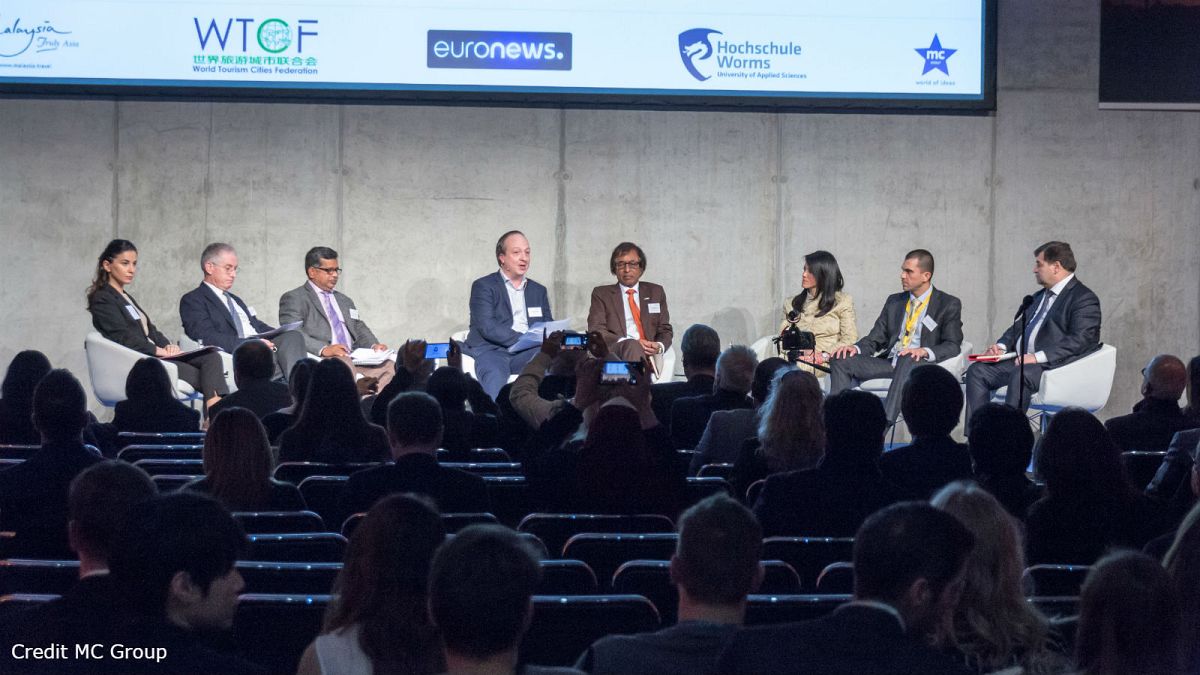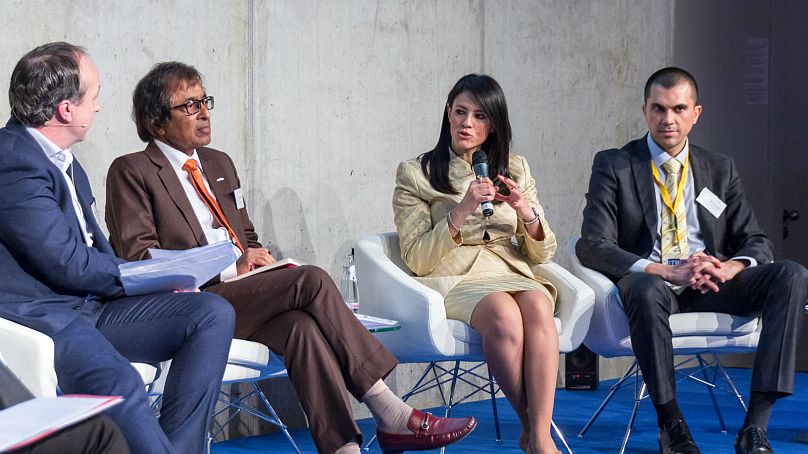In the age of mass tourism, countries are developing transport to catch up with an increasing number of visitors.
Tourism is at the heart of many economies around the world but mass tourism often results in more traffic jams, longer queues and extended waiting times for public transportation.
Faced with increasing traffic, insufficient public transport, and logistical problems to reach popular tourism destinations, countries from around the world are investing heavily to adapt their transport infrastructure to the growing number of tourists they receive every year.
In a roundtable discussion at the tourism ITB convention in Berlin, Manuel Butler, the Executive Director of the World Tourism Organisation (WTO) told Euronews’ Damon Embling that because global tourism was growing at such high speed, more investments were needed from the public and private sector.
“Need to do smarter and more sustainable infrastructure to match the high demand of international tourism,” he said.
From Europe to the Indian Ocean, many countries are building more airports and road networks to satisfy visitors and ease existing transportation woes.
Rania A. Al-Mashat, Egyptian tourism minister, explained that her country has built a new airport, the Sphinx International Airport, which is located in the outskirts of Cairo to ease some of the congestion in Cairo’s main airport and allow tourists to travel faster to different tourist destinations, such as the new Egyptian art museum opening next year and the Red Sea resorts on the Egyptian shore. Al-Mashat added that the government was also considering building monorails and extending the metro lines to ease congestion in Cairo, a city known for its traffic jams.
The ministers of Mauritius and Cyprus, both island nations, highlighted the importance of having good air transportation in their countries.
“Everyone that comes to Mauritius, comes by air, so we need to develop all the infrastructure that we need in order to make the tourists feel welcome whenever he comes,” said Anil Kumarsingh Gayan, the tourism minister of the island nation.
“We want to make tourists welcome in a way that transportation doesn’t become an impediment to tourism.”
Cyprus tourism minister, Savvas Perdios, said that because tourists could only reach the island by plane, the country’s road networks needed to be excellent to allow guests to travel from the airport to somewhere else.
But Perdios said they were now working on luring tourists away from the big resorts to visit other parts of the island.
“We feel it is very important to incentivise people to visit rural areas or city centres away from the main resorts, by doing so you increase the infrastructure in that area.”
For a country like Bangladesh, a South Asian nation that is only now exploring its potential as a tourist destination, investing in the right transport networks is crucial for its development.
The minister of Civil Aviation and Tourism of Bangladesh, Mahbub Ali, said his country’s government was working on a master plan to make it more attractive to tourists, which included an important investment into transportation.
Back in Europe, Georgia, like Bangladesh, is also investing in infrastructure that could increase tourism numbers.
Mariam Kvrivishvili, Head of the Georgian National Tourism Administration, said that as her country develops its tourism industry, ensuring that infrastructure “grows and is refined for multiple directions is key to our success”.
Kvrivishvili added that the government was making sure that transport infrastructure grew in Georgia by building new highways, roads, and airports.
But while countries like Bangladesh and Georgia look at ways to kick start their tourism, countries like Tunisia, which saw its tourism numbers decline after the Arab Spring and terrorist attacks, the goal is not necessarily developing its transport infrastructure but enhancing its security to gain back the trust of international tourism.
“Security in Tunisia is now as good as in any other European country. All tourist destinations have high security, hotels as well,” said the country’s tourism minister Rene Trabelsi.
Trabelsi added that more airports are also been opened around Tunisia to incentivise people to visit other parts of the country.

